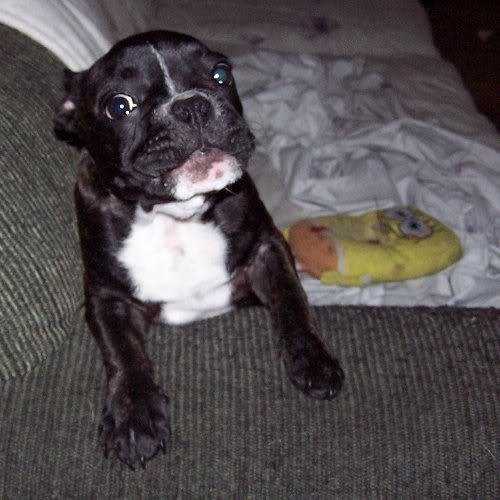Amunet
Fish Aficionado
Alrighty, so as most of you know or well.. maybe remember heh...
A couple of months ago we got ourselves a new puppy.
Recent pic of him
"Nothin to see here folks. Spongebob is just sleeping... yeah... sleeping *shifty eyes*"

I wanted to start training him like basic "tricks" such as sit, and down etc...
Well so far.. sit and down are the only things I can get him to do and even then, his cute little brain gets them mixed up so he'll go down when he should be sitting or sit when he should be down.
So right now, I want to teach him how to shake. Just the paw in the hand thing, but things just aren't going well at all.
He gets SO excited for his treat that I don't think he actually hears or understands what I'm doing.
Plus, whenever I say shake, he goes into the down position
I just don't think he's connecting that when I put his paw in my hand that that is what I want him to do.
So any help on how to teach a very excitable puppy how to shake would be great! Plus any other advice on more tricks would be great as well
A couple of months ago we got ourselves a new puppy.
Recent pic of him
"Nothin to see here folks. Spongebob is just sleeping... yeah... sleeping *shifty eyes*"

I wanted to start training him like basic "tricks" such as sit, and down etc...
Well so far.. sit and down are the only things I can get him to do and even then, his cute little brain gets them mixed up so he'll go down when he should be sitting or sit when he should be down.
So right now, I want to teach him how to shake. Just the paw in the hand thing, but things just aren't going well at all.
He gets SO excited for his treat that I don't think he actually hears or understands what I'm doing.
Plus, whenever I say shake, he goes into the down position
I just don't think he's connecting that when I put his paw in my hand that that is what I want him to do.
So any help on how to teach a very excitable puppy how to shake would be great! Plus any other advice on more tricks would be great as well


